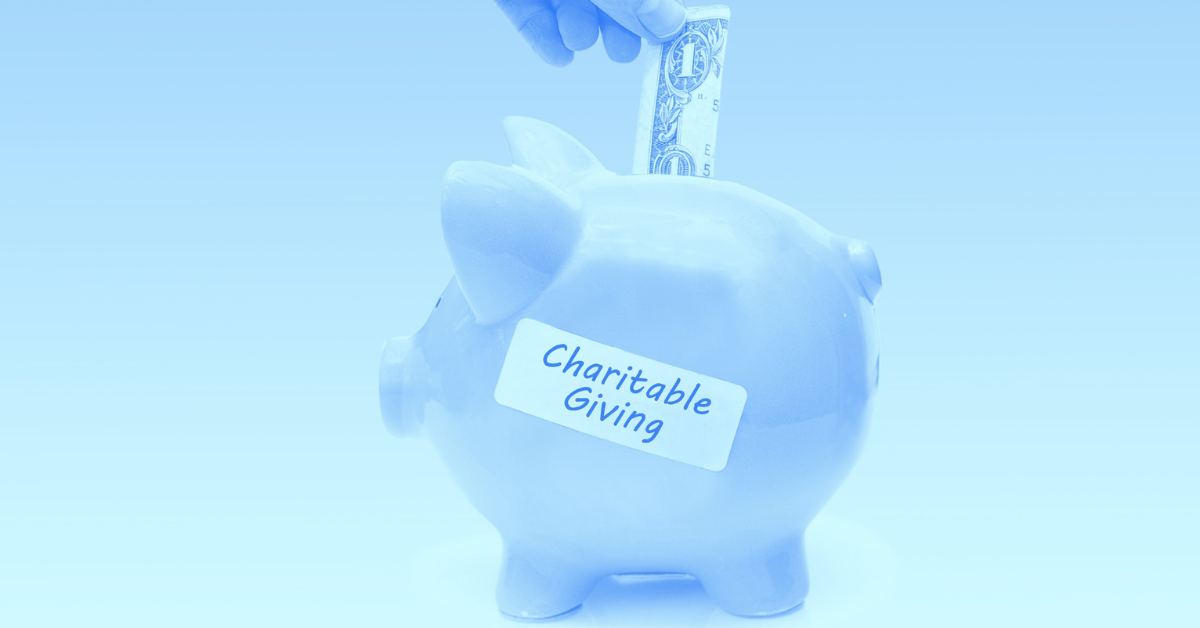What Giving Through a Donor Advised Fund (DAF) Means for Your Taxes
Share this
The hardship of the past year has made evident that there are those in need in our communities and all over the world. For those able, the desire to give and donate resources where needed has been front of mind. While the title of “philanthropist” is surely one many of us would be eager to add to our byline, we don’t all have the resources to form our own private foundations (yet!). Nonetheless, we give in other impactful ways. As such, we here at XYTS would be remiss not to provide you with information about an opportunity to reduce your tax burden while giving.
The Tax Cuts and Jobs Act of 2017 (TCJA) nearly doubled the standard deduction, consequently making it more difficult to itemize deductions, including donations, and file Schedule A. That’s a big reason I am writing this today. I am excited to introduce the Donor Advised Fund (DAF) as an opportunity to give more generously and reduce the tax burden for individuals, families, and even corporations at the same time.
What is a DAF?
A Donor Advised Fund is a charitable giving investment account; its sole purpose is to help you support charitable organizations you care about. Think about a DAF as a philanthropic giving vehicle. They are administered by designated charitable sponsors (think Fidelity, Charles Schwab, or Vanguard) and allow you to establish and fund the DAF by making tax-deductible contributions. You can then recommend grants to transfer your donated funds to qualified charitable organizations.
It’s important for donors to understand that contributions are irrevocable, and their sponsor organization retains legal control over any assets contributed. Thus, it’s your responsibility to investigate the services, fees, and restrictions of the sponsor organization before funding your DAF. As a start, we suggest you identify your sponsor organizations by asking these questions:
• What are the investment minimums?• How high are the ongoing administrative fees?
• Do the investments have reasonable costs?
• Can you assemble a diversified portfolio from the investment options available?
• Can you get good diversification at a low price from the all-in-one portfolio offerings?
Alright, so now you know what a DAF is, but how exactly do you fund it? Cash and mutual fund shares are the most common types of contributions. However, there are several other investments you can contribute to start building your legacy:
• Real Estate
• Other Securities
• Publicly traded stocks
• Bonds
• Privately Held Business Interests
• C-corp stock
• S-corp stock
• LLC & Limited Partnership interests
• Private Equity
• Hedge fund interest
Reasons to set up a DAF
Okay, so you know what a DAF is and how to contribute to it, but wait, why? You need some reasons why setting up a DAF is better than writing a check! And sure, I get it—it seems like a lot of hoops to jump through to contribute to your favorite charities. Let me outline a few reasons for you to think more seriously about utilizing a DAF:
- Establishing a donor-advised fund is easier and less expensive than establishing and running a private foundation.
- The initial paperwork and set-up costs of a DAF are transparent, straightforward, and the sponsoring organization can assist with any complications
- DAFs can be established for far less expense than a private foundation requires.
- Many DAFs initial contribution minimums range from $1,000-$5,000, with some offering no minimums
- Donor-advised funds do not have minimum annual payouts.
- Convenience
- One of the primary benefits of DAFs is the outsourcing of administration, record keeping, and due diligence for donors.
- They can be a breeze to manage, as many DAFs can be monitored and managed through an online portal.
- Expertise is available from the DAF organization.
- Enjoy flexible timing for grant recommendations.
- You can establish a family legacy.
- Donor Advised Funds offer an opportunity for multigenerational collaboration and a learning opportunity about charitable giving for children.
- DAFs offer the ability to name children as successor advisors so that they can continue your family’s. philanthropy.
- There are “in memory” fund options.
- Last but not least, there are tax benefits!
Tax Benefits to Donors
Drumroll, please—I know you’ve been at the edge of your seat waiting for me to get to the tax advantages of DAFs, and I am here to deliver. DAFs provide these primary tax benefits to the donor:
- Contributions to a DAF are treated as donations to 501(c)(3) charities, so donors will receive an immediate income tax deduction in the year you contribute to your DAF. Donor Advised Funds qualify as public charities; thus, contributions immediately qualify for maximum income tax benefits.
- Dependent on your adjusted gross income (AGI), the IRS does mandate some limitations on contributions
- Deductions for cash contributions: Cash donations are only deductible up to 60 % of AGI [CARES Act qualified contributions for relief efforts for 2018 and 2019 disasters are limited to 100% of AGI for 2020 only].
- Deductions for securities and other appreciated assets: Appreciated assets are only deductible up to 30% of AGI.
- There is a five-year carry-forward for deductions above the stated AGI thresholds.
- Dependent on your adjusted gross income (AGI), the IRS does mandate some limitations on contributions
- “Bunching” of contributions to a DAF allows taxpayers to itemize deductions in a single year and then distribute via DAF sponsor in years following.
- The amount donated to your DAF (up to 60% of your adjusted gross income), combined with other potential tax deductions, could result in a larger amount than your standard deduction.
- Giving appreciated stock to a donor-advised fund—or directly to a charity—gives you a tax benefit even if you don't itemize. By doing so, you avoid having to pay taxes on the capital gains that have accumulated through the years.
- If you sell the stock and write a check to the DAF instead, you'll have to pay capital gains taxes.
- If the stock sale would result in a loss, however, it's usually better to sell it first and then write a check to the. DAF or charity so that you can benefit from the capital loss.
- You can avoid capital gains tax AND take the deduction based on the current FMV. You will incur no capital gains tax on gifts of appreciated assets (i.e., securities, real estate, other illiquid assets) and are eligible for a deduction based on the current fair market value (FMV).
- Your DAF will not be subject to estate taxes.
- There is tax-free growth, meaning your investments in a DAF can appreciate tax-free.
- If you are subject to alternative minimum tax (AMT), your contribution will reduce your AMT impact.
Is a Donor Advised Fund in your philanthropic future? I sure hope this information has encouraged you to continue your good deeds and has provided you with a new way to think about being a giver. As a reminder, to take advantage of this on your 2021 tax return, you must set up your DAF and fund it by 12/31/21. If you have any remaining questions about the giving vehicle that is a DAF, or any other tax topics, don’t hesitate to find us here at XYTS. In the meantime, happy giving!
 About the Author
About the Author
Pam Hocevar is an Enrolled Agent and a Financial Paraplanner Qualified Professional with XY Tax Solutions (XYTS). Pam is the real deal when it comes to all things taxes, and she’s got the experience to back her up; she has over 15 years behind her, during 10 of which she ran the show as the owner of her own business. When she’s not working, you’ll find Pam hiking, camping, kayaking, enjoying a jam session on her baritone Ukulele, or attending a music festival.
Share this
- Advisor Blog (694)
- Financial Advisors (221)
- Growing an RIA (119)
- Digital Marketing (87)
- Marketing (84)
- Community (81)
- Business Development (76)
- Start an RIA (76)
- Coaching (72)
- Running an RIA (70)
- Compliance (69)
- Client Acquisition (65)
- Technology (64)
- XYPN LIVE (59)
- Entrepreneurship (58)
- Sales (49)
- Practice Management (44)
- Client Engagement (41)
- Bookkeeping (40)
- Investment Management (40)
- XYPN Books (38)
- Fee-only advisor (37)
- Employee Engagement (31)
- Lifestyle, Family, & Personal Finance (31)
- Scaling an RIA (30)
- Financial Education & Resources (26)
- Client Services (25)
- Journey Makers (21)
- Market Trends (21)
- Process (14)
- Niche (11)
- SEO (9)
- Career Change (8)
- Transitioning Your Business (7)
- Partnership (6)
- Transitioning To Fee-Only (4)
- Sapphire (3)
- Social Media (3)
- Transitioning Clients (3)
- Emerald (2)
- Persona (2)
- RIA (2)
- Onboarding (1)
Subscribe by email
You May Also Like
These Related Stories

What a Qualified Charitable Distribution (QCD) Means for Your Taxes
Sep 20, 2021
3 min read

Your 2021 (Tax) Year In Review from Your Team At XY Tax Solutions
Jan 10, 2022
7 min read







